I’ve seen so many too-long performances lately that I’ve gained renewed appreciation for short, impactful dances. Mentally thumbing through dance history, I came up with ten short solos that make an indelible impression in under eight minutes. Most of them were created to stand alone, without a surrounding context or other dancers. Some have been reconstructed or imitated ad infinitum. They all have endured through time, remaining powerful even when seen in third-generation form on the Internet.
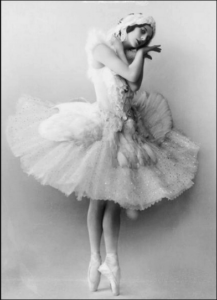 The Dying Swan (1905), Michel Fokine’s solo for Anna Pavlova.
The Dying Swan (1905), Michel Fokine’s solo for Anna Pavlova.
“The dance was composed in a few minutes. It was almost an improvisation. I demonstrated for her, she standing behind me. Then she danced and I walked alongside of her, curving her arms and directing details of the poses… This dance aims, not so much at the eyes of the spectator, but at his soul, at his emotions.”
—Michel Fokine, Memoirs of a Ballet Master
Click here to see Nina Ananiashvili’s rendition at Jacob’s Pillow in 2010. If you asked Nina how she got her arms to be so liquid, she would joke and say she’d take out all the bones of her arms before performing this dance.
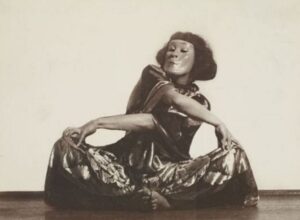 Hexentanz (1914 and 1926), by Mary Wigman, projecting her inner demons. She happened to see in the mirror “one possessed, wild and dissolute, repelling and fascinating. … She was—the witch—earthbound creature with her unrestrained, naked instincts, with her insatiable lust of life, beast and woman at one and the same time.” —Mary Wigman: The Language of Dance, 40–41
Hexentanz (1914 and 1926), by Mary Wigman, projecting her inner demons. She happened to see in the mirror “one possessed, wild and dissolute, repelling and fascinating. … She was—the witch—earthbound creature with her unrestrained, naked instincts, with her insatiable lust of life, beast and woman at one and the same time.” —Mary Wigman: The Language of Dance, 40–41
Check out this fragment of Hexentanz.
The Stair Dance (c. 1918) Bill “Bojangles’ Robinson, developed over time during Vaudeville.
“Instead of going straight up the stairs, Robinson milks the drama of hesitation, ascent, and descent. … It’s the drama of rhythm against constraints. Like a ragtime pianist syncopating an even march or a jazz soloist bringing a melody to the edges of recognition, Robinson shapes the standard into the new by pushing at it from inside.”
—Megan Pugh, American Dancing: From the Cakewalk to the Moonwalk
Check out the clip of his Stair Dance in Harlem Is Heaven (1932).
Pizzicati (1916), by Michio Ito, also called The Shadow Dance. Music by Delibes. Simple, forceful moves by Ito projected as a huge shadow, reminiscent of either a puppet or a dictator and described as having a “mystifying power.”
“A slim black figure silhouetted in startling relief against an enormous gold screen dominated the Rose Bowl and held the crowd of five thousand people spellbound and silent.” (reviewed in 1929, quoted by Caldwell, 88).
Lamentation (1930) by Martha Graham, to music by Kodály.
“Martha in Lamentation showed you the total, agonized lamenting of…all humans who had experienced loss and with it, unbearable anguish.” —Walter Terry (quoted in Martha Graham: Choreographer of the Modern, by Neil Baldwin)
Click here to see Graham herself in this dance.
Harmonica Breakdown (1938) by Jane Dudley to music by Sonny Terry. The solo woman’s figure strides with fierce determination, evoking the effects of grinding poverty in a succinct, powerful composition. She’s struggling against the obstacles while also expressing glimmers of hope or pleading. But mostly, it’s a grim feeling of constant striving.
Here’s a Vimeo clip of excerpts of S. Ama Wray performing it, with commentary by Jane Dudley.
Strange Fruit (1943) by Pearl Primus, danced to the eponymous poem by Lewis Allan aka Abel Meeropol.
“The dance begins as the last person begins to leave the lynching ground and the horror of what she has seen grips her, and she has to do a smooth, fast roll away from that burning flesh.” —Pearl Primus, “Five Evenings with American Dance Pioneers,” 1983
Click here for the rendition performed by Dawn Marie Watson of Philadanco.
Trio A (1966) by Yvonne Rainer, originally created as a trio section of The Mind Is a Muscle, this piece is iconic not for its entertainment value, but because it embodies Rainer’s series of refusals at the time: rejecting eye contact with the audience, dynamics, contrast in tempo, structure through repetition.
This film, produced by Sally Banes in 1978, has Rainer performing it twice.
Water Motor (1978) by Trisha Brown, a 2 ½ minute swooping sequence that allows you to see—if you don’t blink—the initiation and follow through of Trisha’s extraordinarily fluid movement chains. She choreographed it meticulously to have the look and feel of improvisation. In her memorial piece on Trisha Brown, Deborah Jowitt referred to the “explosively careering Watermotor.”
Here’s the famous Babette Mangolte film of Water Motor, with an aftermath of slow motion. (The title is spelled with either one word or two.)
(Thanks to Lois Greenfield for the this photo and the next one.)
Caught (1982) by David Parsons, astounding illusion of an airborne solo, created by strobe light and incessant jumping. As Jowitt wrote in Artsjournal.com, this solo “shows us, via meticulously timed flashes of strobe light, a dancer who can appear to fly.” Click here for a YouTube of excerpts.
What short solos would you add to this list?
Featured 18
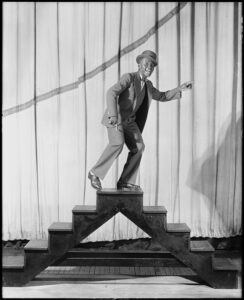
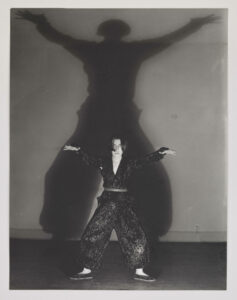
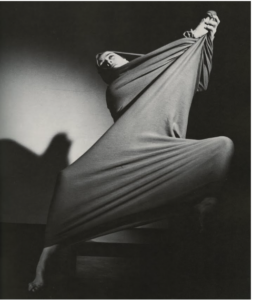
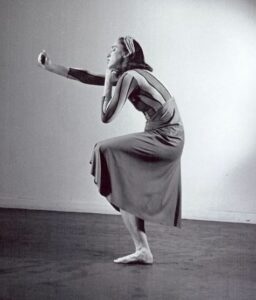
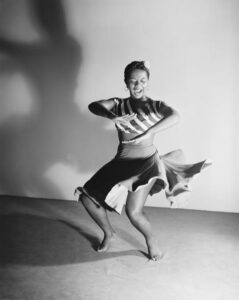
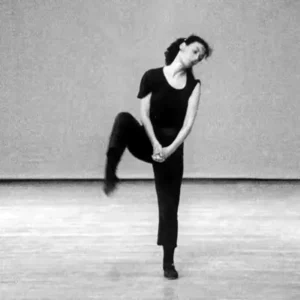
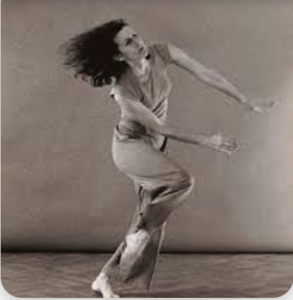
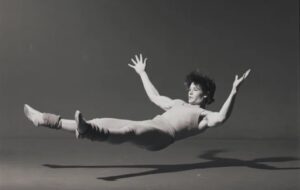
Love this list! How about one of Sybil Shearer’s solos?
I saw her dance around 1969 and she was unforgettable. I wish I could remember the name of that solo. Have you seen my Unsung Hero on Sybil Shearer? It’s on this same site. Which of her solos is YOUR favorite?
Me again.
And Bella Lewitzky in “On the Brink of Time.”
Nice. Is it online anywhere? What year did she make it?
Would you consider Margie Gillis’ “Slipstream” ?
https://youtu.be/JZZw6Nwa1Ac
Wow. Thank you for that link. Gorgeous! I love the circularity and the way it builds. Did you see that solo performed live? Has Margie every taught it to anyone else?
You’re welcome! I was glad to see that a video existed online.
Yes, I did see it performed live, in fact I saw the performance in the link. I was the production manager at the Joyce at the time. I believe your company performed at the Joyce when I was there (1990-1995).
I’m not sure if Margie has taught it to anyone else – but it’s possible she has through her “Legacy Project”. https://margiegillis.org/
Yes, my company performed at the Joyce in 1991. And in 1993, Peter Boal performed there and included a solo I made for him to music by Philip Glass. Did you work on both those shows? Thx for the link to Margie Gillis’ legacy project.
Joe Goode performing 29 effeminate gestures. I believe it is a national treasure.
That solo is definitely a landmark and a classic. But is it short? Also, is there a good version online? When I was searching for it a few years ago, I found only a super blurry version.
Silas Riener in Merce Cunningham’s “Split Sides”. There’s a BAM video on youtube. The work is difficult and he is beautiful.
I love Storyboard P’s dance he made to the Bullitts song “Close Your Eyes” filmed on the street “Somewhere in Brooklyn’. It can be seen on youtube. Storyboard is incredible.
Tnx for both ideas. I was staying away from solos within group pieces cuz there are so many of those. Yes, Storyboard P is wonderful. I found the piece yr talking about here: https://www.youtube.com/watch?v=JE4X3sCVpws. I also thought of ending the list with Lil Buck’s version of Dying Swan, which would bring it full circle.
Thank you so much for selecting these iconic works for our consideration.
Duncan’s solo that grabs attention is Revolutionary. Of course we aren’t able to see a moving image of Isadora but here is one of my favorite versions by Kristen Foote. https://www.youtube.com/watch?v=_tub8Selyic
Thank you SO much. I was knocked out when I saw Annabelle Gamson do that solo in the 1980s. To watch Kirsten Foote perform it is a special treat. She was in my grad seminar at Tisch Dance at NYU, and she was very involved with reconstructions back then. She gives Revolutionary real power and zeal!
Elizabeth Streb’s “Little Ease”
Yessss! That was an amazing work. Short, claustrophobic, and powerful!
How about “Chaconne,” a cornerstone in the José Limón canon?
Check out this video on line https://youtu.be/7a3iuWko0BA
Thanks. Great idea. I just saw an arrangement of Chaconne for about 30 Juilliard students that augmented the architecture of the piece. Really beautiful.